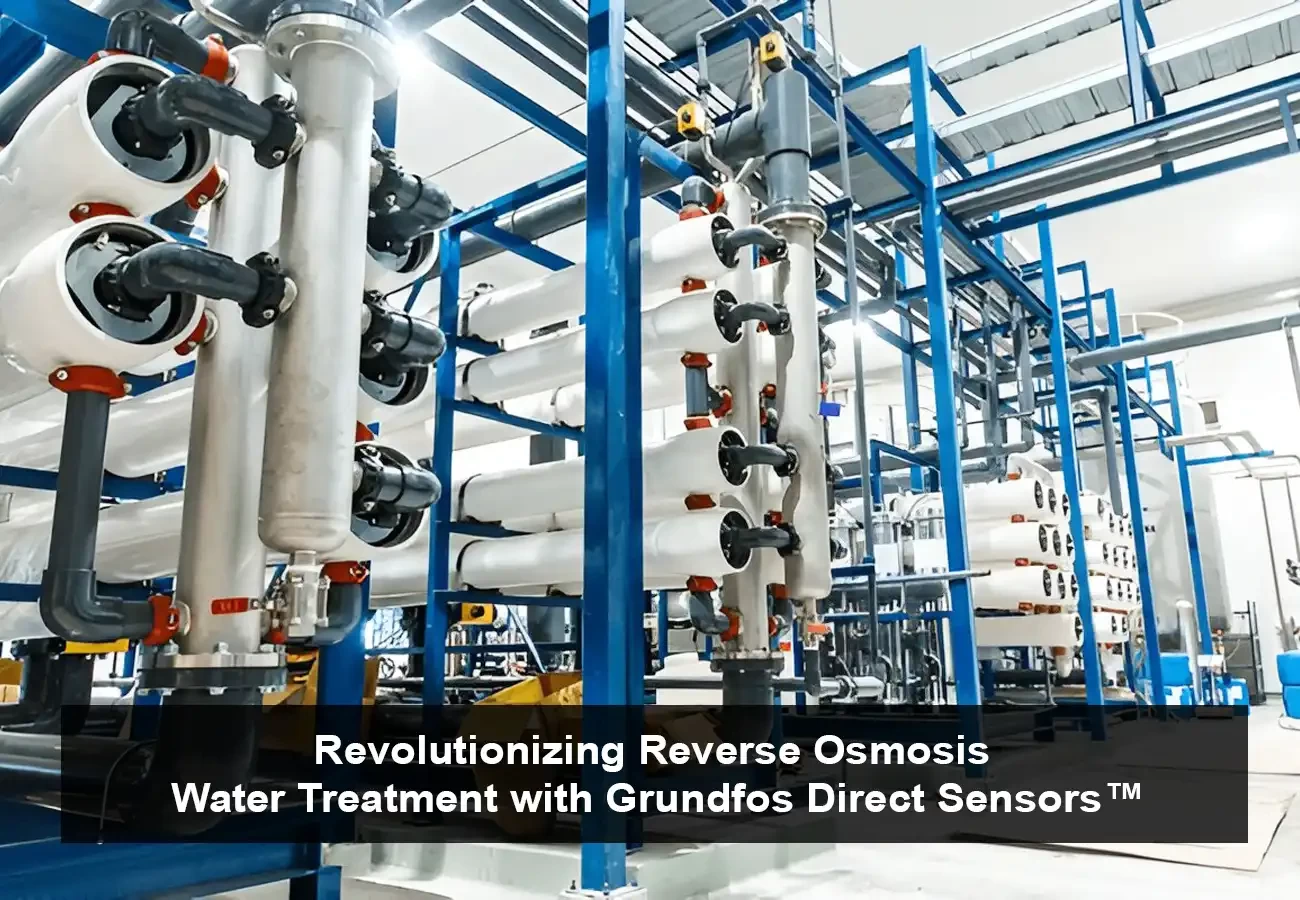Revolutionizing Reverse Osmosis Water Treatment with Grundfos Direct Sensors
Water treatment, especially in complex systems like Reverse Osmosis (RO), requires precision and reliability to ensure the process is effective and efficient. The need for continuous monitoring and maintenance is critical to prevent system failures, avoid unnecessary downtime, and reduce energy costs. Grundfos has taken a giant step forward in this area with their innovative Direct Sensors™, which offer both reliability and cost-effectiveness for water treatment systems, particularly in reverse osmosis applications.
The Challenge
In Reverse Osmosis (RO) water treatment, maintaining the proper balance of pressure and temperature is essential for optimal performance. Any deviations—such as blockages or pressure imbalances—can cause system failures, reduced water quality, or higher operational costs. Monitoring these parameters traditionally requires multiple sensors for different functions, making the process cumbersome, energy-intensive, and expensive.
When Euraqua, a leading provider of RO systems, sought to improve its monitoring processes, they needed a solution that would provide both pressure and temperature readings in a single, economical device. Additionally, the solution had to help detect any over-pressure conditions caused by blockages and ensure the continuous presence of water in the system—critical factors for efficient operation.
Also Read: Advantages and Disadvantages of Reverse Osmosis Systems
The Solution: Grundfos Direct Sensors™
To address Euraqua’s needs, Grundfos introduced its Relative Pressure and Temperature Sensor (RPS) as part of their Direct Sensors™ range. The RPS sensor is designed specifically for use in RO water treatment systems, offering precise monitoring of both pressure and temperature in a single device.
Grundfos' RPS sensors come in two variants: the RPS 0-10 bar and the RPS 0-16 bar. These sensors are engineered to measure and control the key parameters that influence the performance of an RO system. By measuring both pressure and temperature simultaneously, these sensors can detect issues such as blockages or over-pressurization, which could otherwise cause significant damage to the system.
What sets the RPS sensor apart is its ability to provide these critical measurements without the need for separate loop power controls, making it more cost-effective and energy-efficient than traditional sensors that require 4-20 mA devices.
The Outcome: Enhanced Efficiency and Cost-Effectiveness
The implementation of the RPS sensor in Euraqua's RO systems provided several key benefits:
- Cost Savings: The RPS sensor combines pressure and temperature measurements in a single unit, which reduces installation costs. Without the need for additional loop power controls, it becomes an even more economical solution for system monitoring.
- Energy Efficiency: Unlike traditional sensors, which can consume more power, the RPS sensor uses less energy, contributing to overall system efficiency. This lower energy consumption helps to reduce operational costs and improve the system’s sustainability.
- Reliable Monitoring: The RPS sensor offers robust, accurate outputs that help operators track and manage pressure and temperature conditions in real-time, ensuring the system performs optimally. The sensor is built to withstand harsh conditions and deliver consistent, reliable data.
- Reduced Maintenance Costs: With the ability to detect overpressure caused by blockages and monitor the presence of water, the RPS sensor helps prevent costly system failures and downtime. This not only minimizes maintenance needs but also extends the life of the RO system.
Conclusion
The Grundfos Direct Sensors™—specifically the RPS sensor—provide a commercially viable and highly effective solution for Reverse Osmosis water treatment systems. By combining pressure and temperature measurements into one compact, energy-efficient device, Grundfos has simplified the monitoring process, making it more cost-effective and sustainable. The result is a more reliable, efficient RO system that minimizes downtime, reduces energy consumption, and ultimately saves money for businesses like Euraqua.
For industries that rely on precision water treatment, Grundfos offers a smarter, more efficient way to monitor and control their systems—ensuring performance, sustainability, and cost-effectiveness in every drop.


